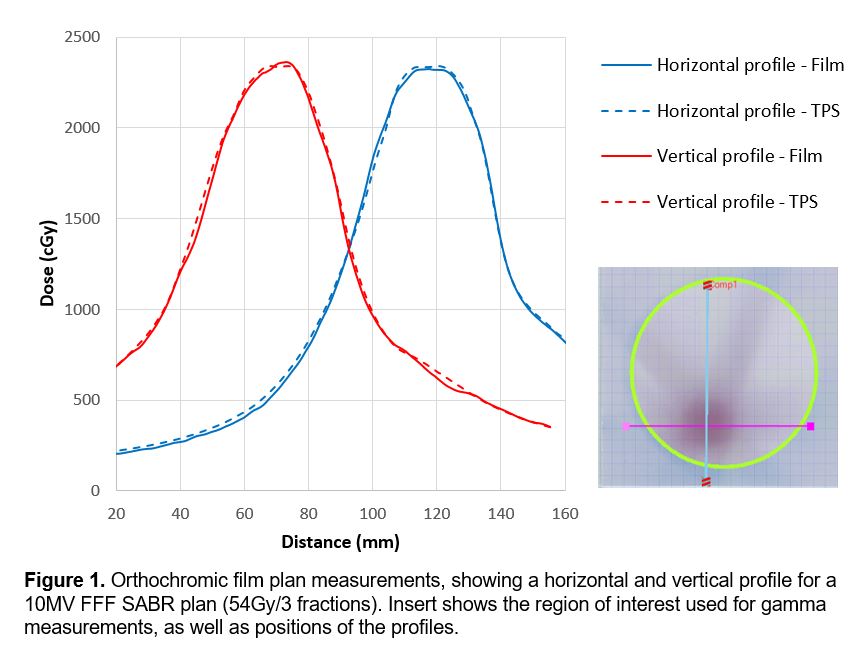Evaluation of a new film dosimetry system for radiotherapy; orthochromic
Antony Palmer,
United Kingdom
PO-1532
Abstract
Evaluation of a new film dosimetry system for radiotherapy; orthochromic
Authors: Antony Palmer1, David Nash2
1Portsmouth Hospitals University NHS Trust, Medical Physics Dept., Portsmouth, United Kingdom; 2Portsmouth Hospitals University NHS Trust, Medical Physics Dept, Portsmouth, United Kingdom
Show Affiliations
Hide Affiliations
Purpose or Objective
Film
dosimetry is an important technique for the verification of complex
radiotherapy delivery for audit or individual patient plan quality assessment.
However, uncertainties including lateral scan artefact inherently limit
achievable accuracy with conventional transparent radiochromic films. This
study is the first to consider a completely new film and associated analysis
software: Orthochromic (OrthoChrome Inc., USA), which mitigates many of these
limitations. We characterise the film response to radiotherapy irradiation,
evaluate improvements in the scanning process, and investigate results with a
test treatment plan verification.
Material and Methods
Orthochromic
film OC-1 and Orthochrome Pro software (OrthoChrome Inc.) were evaluated in
this study. The opaque film is scanned in reflective mode on a conventional
flatbed scanner (Epson 12000XL). We characterised the film for use in routine
radiotherapy clinic dosimetry applications and plan verifications: Including
calibration accuracy, response as a function of dose level (0 to 200 Gy) and
dose rate (0.4 to 2.4 Gy/min), effects of film orientation on scanner, lateral
position of film on scanner, with repeated scanning, and post-exposure changes
with time. The film was used in an IMRT Thorax Phantom (CIRS, USA) to verify
the treatment delivery of a 10 MV FFF (flattening filter free) Pinnacle
(Philips, NL) lung SABR plan (54Gy/3 fractions), with the film positioned in a
transverse plane through the target. Profile comparison and gamma analysis within
specified isodose (50% and 5%) were used.
Results
A
reliable calibration of the OC-1 film was obtained using the Orthochrome Pro
software: individual calibrations were obtained for multiple lateral scan
positions on the scanner. The film exhibited a logarithmic post exposure
darkening, and non-linear response as a function of dose level, consistent with
radiochromic film. There were no dose rate effects observed (<0.1% change).
There were no film orientation effects at scanning on pixel value (<0.1%
change), and much reduced lateral scan effects across the scanner compared to
radiochromic film (<0.7% change across scanner at up to 20 Gy). Repeated
scanning of the film up to the tested 20 times did not change the scanned pixel
value. Comparison of the measured and planned dose distributions for the SABR
plan showed good agreement. Comparison profiles through the high dose region
are shown in Figure 1. The gamma comparison between measured and planned is
shown in figure 2.


Conclusion
We
are the first to report a full characterisation of the new orthochromic film
dosimetry system for radiotherapy, including an example treatment plan
verification. The data provided is valuable for implementation of the system in
a radiotherapy clinic or for dosimetric audits.